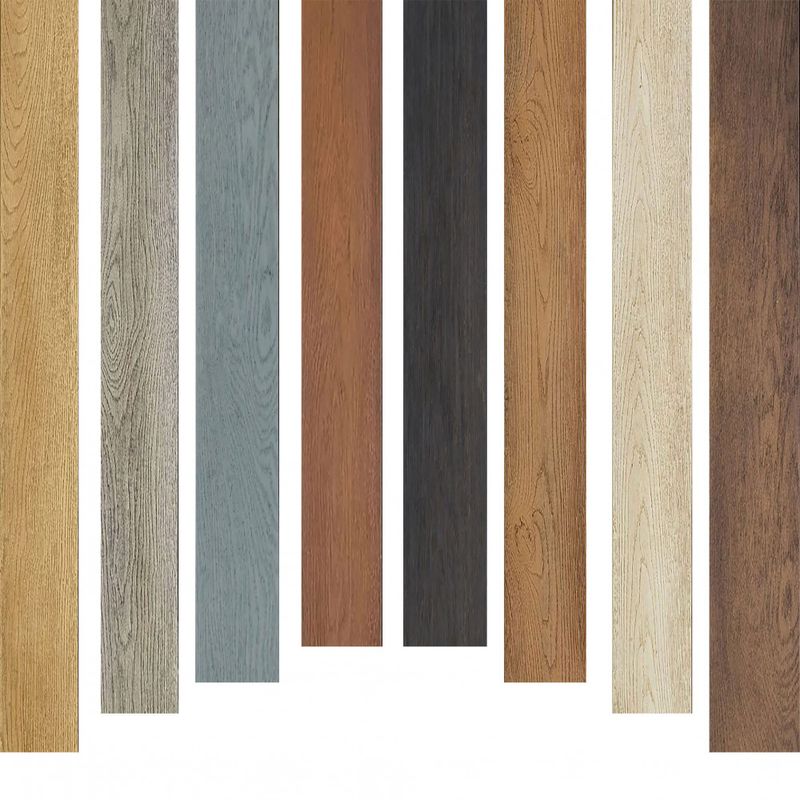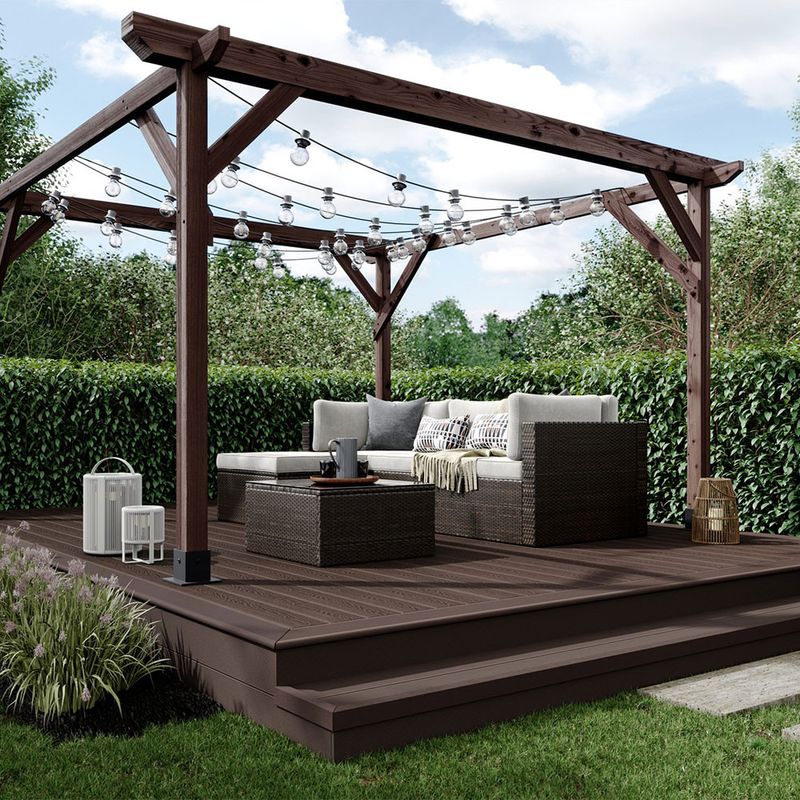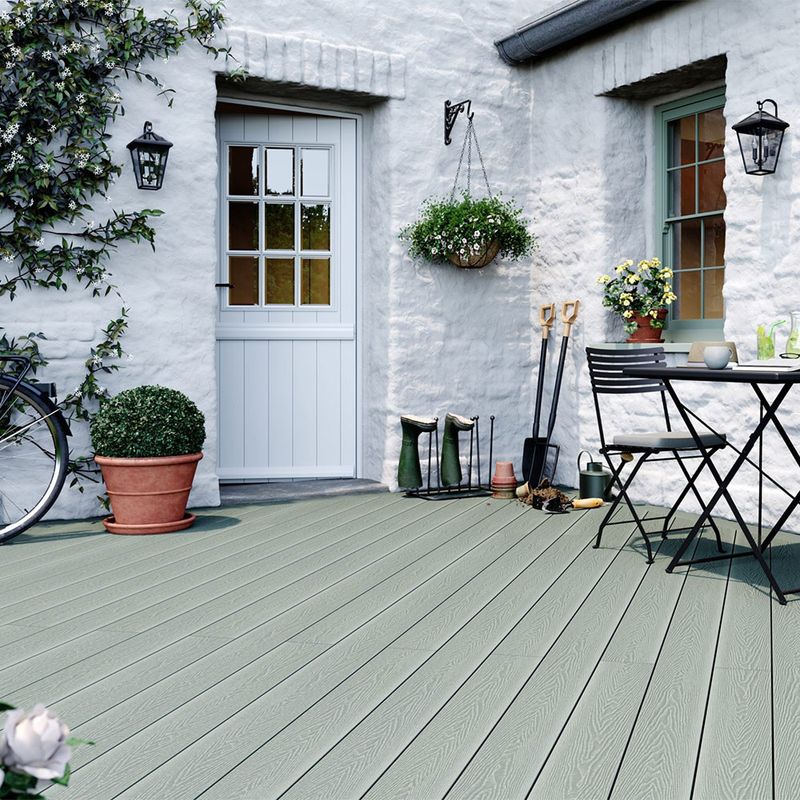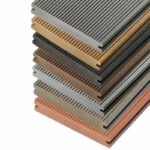Are you having a hard time deciding whether to opt for wood or composite decking?
These two options are among the most popular types of decking in the UK that can often be different to separate.
At the end of the day, it often comes down to the question:
How long does composite decking last?
The short answer – roughly 25 to 30 years. But that’s not all!
Here at Landscaping Superstore, our customers often enquire about composite decking lifespan. So, we decided to help them out with a detailed guide on the subject that’s going to answer all your questions.
Let’s crack on.
Table of contents:
- What is composite decking?
- How long does composite decking last compared to wood?
- What are the disadvantages of composite decking?
- Does composite decking need maintenance?
- Wrapping it up
What is composite decking?

Introduced as an alternative to traditional timber decking and other types of outdoor flooring in the 1990s, composite decking is crafted from a blend of reclaimed wood fibres, typically polyethylene or polypropylene plastic, and a binding agent, aiming to replicate the classic look of wooden decking while delivering a range of advantages. These composite boards come in various sizes, colours and textures, closely mimicking different wood grains.
Among the standout benefits of composite decking is its exceptional durability, marked by resistance to rot, decay and insect damage, all of which are common concerns with natural wood decking.
Additionally, composite decking boasts lower susceptibility to warping, splintering and fading when compared to traditional wood.
How long does composite decking last compared to wood?
As previously mentioned, composite decking is renowned for its durability, offering a longer lifespan compared to wood decking due to its enhanced resistance to weathering and general wear and tear.
However, it’s important to note that the exact lifespan of composite decking can vary significantly based on the specific composite decking materials and whether it belongs to the first or second generation.
Here’s the breakdown:
First-generation composite decking typically features a less effective wood-fibre layer on the surface, rendering it more vulnerable to the elements, with an expected lifespan of around 15-20 years.
In contrast, second-generation composite decking, now far more prevalent, comes equipped with a robust, protective capped layer approximately 1.6mm thick. This layer offers superior resistance to environmental factors and significantly reduces moisture absorption, resulting in a considerably extended lifespan. Many of these second-generation options offer a 25-year warranty but can easily endure for about 30 years or more with proper installation and maintenance.
What’s even more remarkable is that numerous industry experts suggest that high-quality capped composite decking may last as long as 50 years. This starkly contrasts with traditional softwood decking, which typically lasts 15 to 20 years, and certain hardwood decking types, which may endure up to 25 years but necessitate regular and expensive maintenance through oiling, cleaning and refinishing.

What are the disadvantages of composite decking?
We’ve already delved into the numerous advantages of composite decking. However, as with any solution, it’s essential to acknowledge a few drawbacks.
Here’s what you need to know:
First, composite decking can be relatively costly. While prices have decreased in recent years, your initial investment is likely to be higher than if you were to opt for timber decking. On the bright side, you’ll save more on long-term maintenance costs.
Second, capped composite decking can exhibit a somewhat artificial sheen, which may not appeal to everyone’s taste. However, this is primarily a matter of personal preference, and you and your family might find it quite appealing.
Third, even the finest composite decking will exhibit some signs of wear and tear over time.
As for the question of ‘does composite decking fade’, the answer is yes, it may fade slightly, particularly when consistently exposed to the unpredictable British weather. Nonetheless, this is not a unique disadvantage of composite decks and is also applicable to timber decking.
Does composite decking need maintenance?

Composite decking offers the advantage of low maintenance, eliminating the need for regular staining, sealing or painting. It’s also resistant to moisture and stains, simplifying the cleaning and upkeep process.
However, it’s important to note that while composite decking is low-maintenance, it still requires some care to ensure the optimum composite decking lifespan and keep the boards in excellent condition for years to come.
The cleaning process is relatively straightforward:
Step 1: Begin by clearing the deck of furniture and debris, securing any loose boards or screws.
Step 2: Proceed to rinse the deck with a pressure washer on a low setting, applying either a commercial decking cleaner or a homemade cleaning solution.
Step 3: Scrub the deck with a brush, allowing the cleaning solution to sit for approximately 15 minutes.
Step 4: Rinse the deck thoroughly with water and allow it to dry for at least 24 hours.
For a comprehensive overview of the cleaning process, refer to our comprehensive guide on How to clean decking.
Wrapping it up

Composite decking presents a sturdy and low-maintenance substitute for conventional wood decking. Additionally, it boasts extended durability and eco-friendly attributes, with very few drawbacks.
In summary, now that you understand the crucial query of ‘how long does composite decking last’, you should have a well-defined notion of what you can anticipate from your composite decking in terms of its longevity and how to maximise its lifespan.














